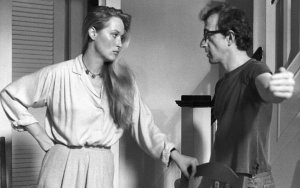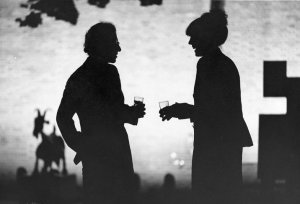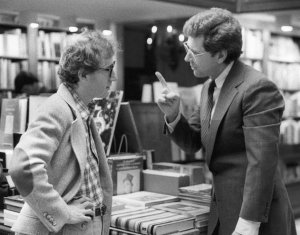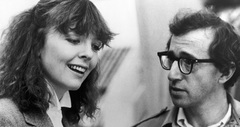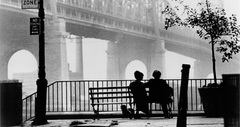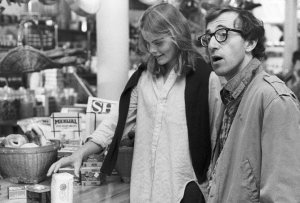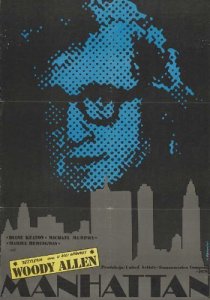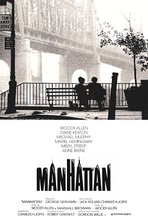Manhattan ***** (1979, Woody Allen, Diane Keaton, Mariel Hemingway, Michael Murphy, Meryl Streep) – Classic Movie Review 1797
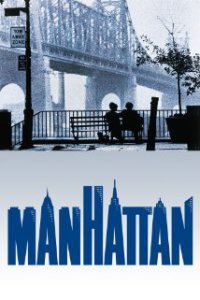
Of all co-writer/director Woody Allen’s many movies, this 1979 salute to – or maybe love letter to – his home town of New York City is arguably his finest masterpiece. It won 1980 Bafta awards for Best Film and Best Screenplay, but the two Oscar nominations for Best Original Screenplay and Best Supporting Actress (Mariel Hemingway) didn’t turn into wins and, shamefully, Gordon Willis’s spectacular widescreen monochrome cinematography wasn’t even nominated.
Allen stars as the neurotic 42-year old hero Isaac Davis and the movie, of course, concentrates on his typically difficult and complicated relationships with women. His second ex-wife Jill (Meryl Streep) is a bisexual / lesbian who has left him for another woman and is writing a tell-all exposé book of their troubled marriage and acrimonious split.
Isaac and Jill have a little boy together, living with his two mothers, somewhat to Isaac’s disgust. Isaac seems fond of the kid, taking him out on his days, but the kid is peripheral in his life and quickly forgotten.
Isaac is working as a TV writer, also to his disgust, and he walks out on the job he despises to concentrate on writing his novel, making him poor, so he has to change to a cramped, noisy apartment. The film gives the strong feeling that Isaac doesn’t like lesbians or TV very much.
He starts dating a 17-year-old girl called Tracy (Mariel Hemingway) who romantically pursues him. But she is still in high school and so he doesn’t really see any future in the relationship. And then he falls in love with journalist Mary (Diane Keaton), the mistress of his married best friend Yale (Michael Murphy).
The performances are impeccable, with Hemingway, Keaton and Murphy all ideally cast and first rate. Streep makes a strong impression in a brief and unsympathetic role. They are all very naturalistic, fascinating, and of course above all highly amusing.
Marshall Brickman co-writes the fine, Manhattan-savvy screenplay. It is extremely witty, clever, perceptive and funny. But what perhaps most is Woody’s great iconic performance as the divorced TV comedy writer Isaac, Gordon Willis’s spectacular widescreen monochrome cinematography and the gorgeous 13 George Gershwin tunes on the soundtrack that link, accompany and comment on the sequences.
The movie opens with a jaw-dropping montage of scenes of Manhattan, shot by maestro Gordon Willis, and accompanied by Gershwin’s Rhapsody in Blue on the soundtrack, as Isaac Davis rambles on to try to try to find his ideal first sentence for his New York City novel. This is a perfect art work. You just don’t want it to stop and you want to see it again immediately, put it on a permanent loop. You’d kind of think the movie that would follow it would be a letdown. But no!
Some of Willis’s ravishing compositions in the movie are quite awesome, just incredible. You are torn between admiring the movie as an art work or just relishing it as a romantic comedy. But of course it is both, working perfectly in synch at the same time. And, as time goes by, it has captured the spirit of its era as perfectly as it captured the spirit of its town.
It co-stars Wallace Shawn as Keaton’s ex, Jeremiah, Anne Byrne as Murphy’s wife, Karen Ludwig as Streep’s girlfriend Connie. Frances Conroy, Tisa Farrow and Mark Linn-Baker play Shakespearean actors. Charles Levin, Karen Allen and David Rasche play TV actors.
The bridge scene with Allen and Keaton was shot at 5am, with the film-makers bringing along their own park bench as none existed on that spot. Willis got the city authorities to leave the bridge lights on, over-riding the timer that normally turned them off at sun up, to get his shot. But one string of the lights went out.
It returns to UK cinemas on 12 May 2017 in a new 4K digital print scanned from the original camera negative.
© Derek Winnert 2014 Classic Movie Review 1797
Check out more reviews on http://derekwinnert.com/

